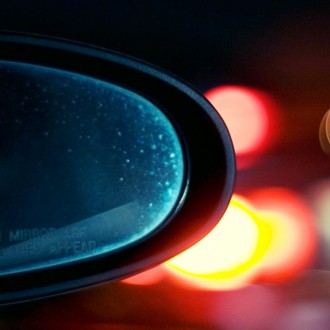

The earliest known form of stage lighting was during the early Grecian (and later the Roman) theatres. They would build their theatres facing east to west so that in the afternoon they could perform plays and have the natural sunlight hit the actors, but not those seated in the orchestra. Natural light continued to be utilized when playhouses were built with a large circular opening at the top of the theatre. Early Modern English theatres were roofless, allowing natural light to be utilized for lighting the stage. As theatres moved indoors, artificial lighting became a necessity and it was developed as theatres and technology became more advanced. At an unknown date, candlelight was introduced which brought more developments to theatrical lighting across Europe.
While Oliver Cromwell was ruling Britain, all stage production was suspended in 1642 and no advancements were made to English theatres. During this theatrical famine, great developments were being made in theatres on the European mainland. Charles II, who would later become King Charles II witnessed Italian theatrical methods and brought them back to England when he came to power. New playhouses were built in England and their large sizes called for more elaborate lighting. After the refurbishing of the theatres, it was found that the “main source of light in Restoration theatres to be chandeliers” which were “concentrated toward the front of the house, and especially over the forestage”.[3] English theatres during this time used dipped candles to light chandeliers and sconces. Dipped candles were made by dipping a wick into hot wax repeatedly to create a cylindrical candle. Candles needed frequent trimming and relighting regardless of what was happening on-stage because “they dripped hot grease on both the audience and actors”.[3] Chandeliers also blocked the view of some patrons.
There were two different types of Restoration theatres in England: Restoration commercial theatres and Restoration court theatres. Commercial theatres tended to be more “conservative in their lighting, for economic reasons” and therefore used “candle-burning chandeliers” primarily. Court theatres could afford to “use most of the Continental innovations” in their productions (Penzel 16). Theatres such as the Drury Lane Theatre and the Covent Garden Theatre were lit by a large central chandelier and had a varying number of smaller stage chandeliers and candle sconces around the walls of the theatres.[3] Two main court theatres, built between 1660 and 1665, were the Cockpit Theatre and the Hall Theatre. Chandeliers and sconces seemed to be the primary lighting sources here but other developments were being made, especially at the Hall. By the 1670s, the Hall Theatre started using footlights, and between 1670 and 1689 they used candles or lamps. It can be noted that by the end of the 17th century, “French and English stages were fairly similar”.[3] There is not much written on theatrical lighting in England at the end of the 17th century and from the little information historians do have, not much changed by the middle of the 18th century. Gas lighting hit the English stage in the early 1800s beginning with the Drury Lane and Covent Garden theatres. In the 1820s, a new type of artificial illumination was developed. In this type of illumination, a gas flame is used to heat a cylinder of quicklime (calcium oxide). Upon reaching a certain temperature, the quicklime would begin to incandesce. This illumination could then be directed by reflectors and lenses. It took some time from the development of this new Limelight before it found its way into theatrical use, which started around 1837. Limelight became popular in the 1860s and beyond, until it was displaced by electrical lighting. Lighting advances made in English Theatres during this timeframe paved the way for the many lighting advances in the modern theatrical world.

Leave us a Comment